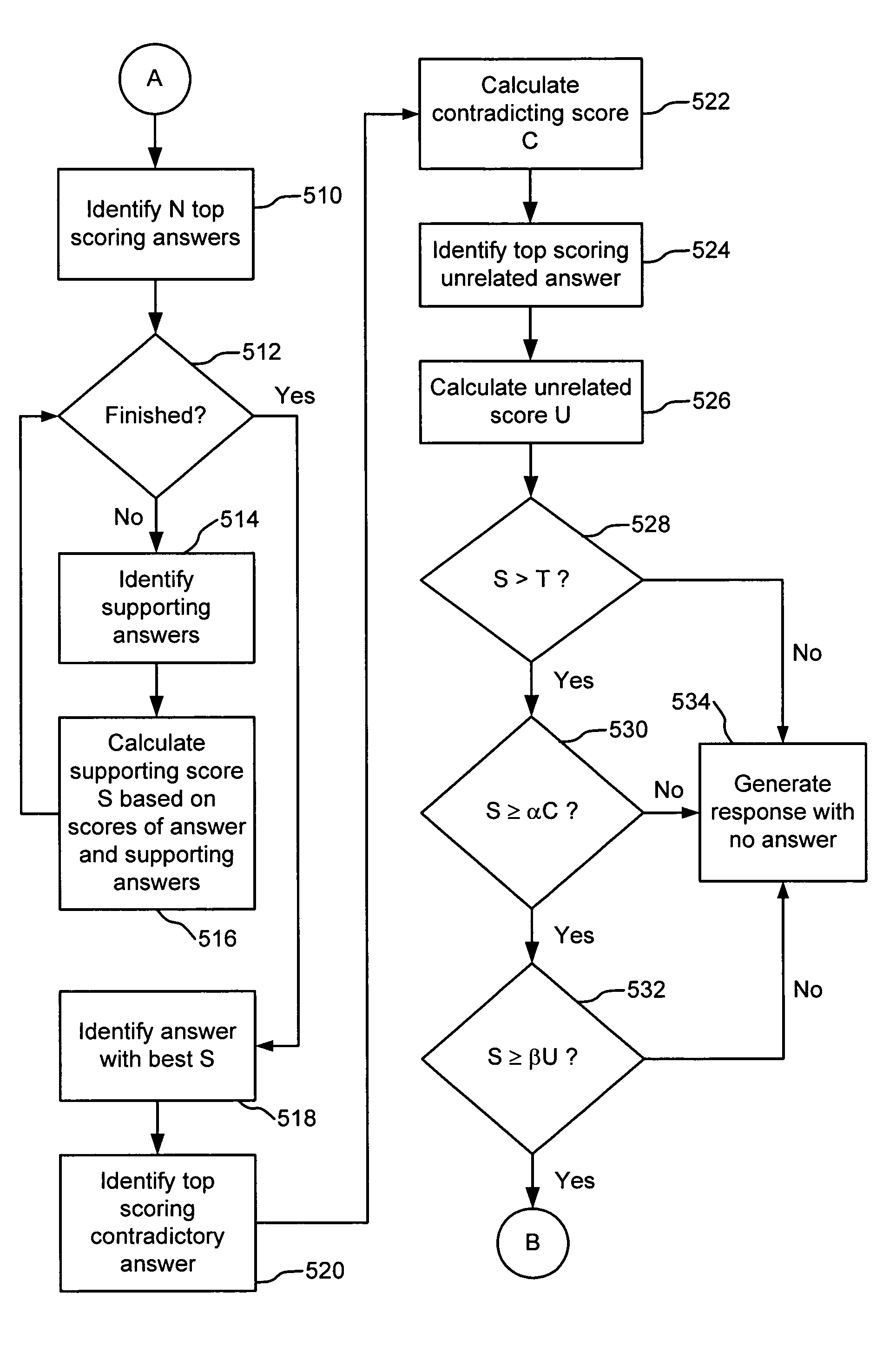Selecting the best answer to a fact query from among a set of potential answers
a fact query and best answer technology, applied in the field of facts query, can solve the problems of web search engines that are not helpful to users in this regard, provide a simple, succinct, and limit the types of questions that these engines can answer
- Summary
- Abstract
- Description
- Claims
- Application Information
AI Technical Summary
Benefits of technology
Problems solved by technology
Method used
Image
Examples
Embodiment Construction
A query engine can store factual information gathered from many disparate sources and return answers in response to queries for factual information (or “factual queries”) from a user. Gathering information from many sources expands the scope of available factual information for the query engine, but also introduces the possibility of multiple possible answers. The query engine may identify possible answers and select a best answer from the possible answers to present to the user, or it may determine that none of the possible answers are presentable to the user. The query engine may also provide a list of sources of the answer, including portions of text from each source. The portion or portions of text is called a snippet and may include terms of the factual query and terms of the answer. While a snippet shows the answer identified or selected by the search engine, the list of sources provide the user with the basis for the answer and may aid the user in evaluating the veracity of t...
PUM
 Login to View More
Login to View More Abstract
Description
Claims
Application Information
 Login to View More
Login to View More - R&D
- Intellectual Property
- Life Sciences
- Materials
- Tech Scout
- Unparalleled Data Quality
- Higher Quality Content
- 60% Fewer Hallucinations
Browse by: Latest US Patents, China's latest patents, Technical Efficacy Thesaurus, Application Domain, Technology Topic, Popular Technical Reports.
© 2025 PatSnap. All rights reserved.Legal|Privacy policy|Modern Slavery Act Transparency Statement|Sitemap|About US| Contact US: help@patsnap.com



